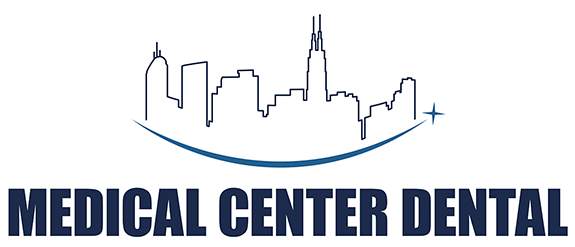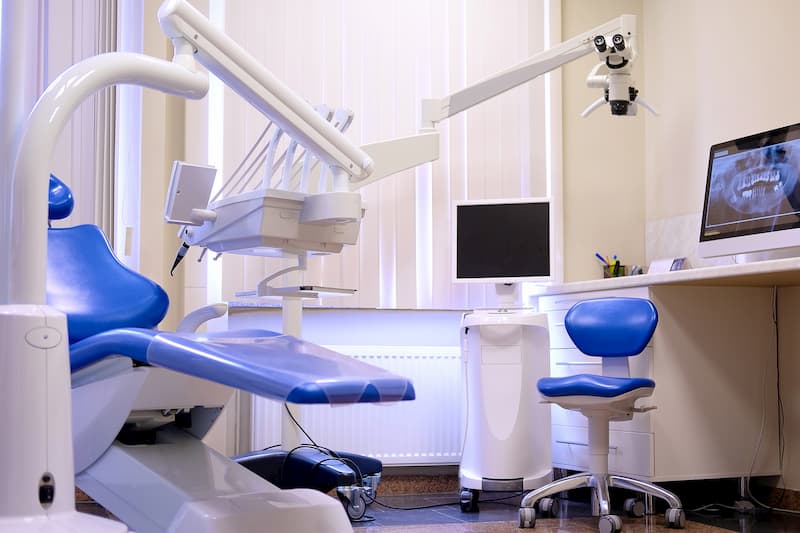Dental X-Rays & Radiographs In Houston
Sometimes patients question the necessity of taking dental x rays and wonder why they are recommended even for patients who maintain excellent dental hygiene and attend regular dental cleaning visits. The dental X-ray is an important diagnostic tool your Houston dentist uses to assess your teeth’ health in ways that cannot be done by visual inspection alone.
X-rays can reveal cavities in hidden places, such as between teeth, and they give a far better idea of the severity of cavities and insight into the health of the roots of your teeth and the bone they sit in. Taking dental X-rays is an integral part of monitoring your dental health. Since they can detect problems before they have become severe enough to cause symptoms, x-rays are an essential part of dental care that can save you both pain and money down the road.
Does Having Dental X-Rays Taken Hurt?
X-rays are non-invasive diagnostic tools that do not require any type of anesthesia or pain management tools. During the x-ray process, you must sit still for only a few seconds while the technician is taking the picture. A protective apron shield is also placed over your body during the process. Having dental X-rays taken does not cause you to feel any pain, and you will not notice anything when the X-rays pass through you.
The only discomfort involved maybe when you have the holder containing the sensitive film placed in your mouth near the tooth. You will be asked to bite down to hold it firmly in place while the X-ray is being taken, and that can feel slightly unusual though most people have no problem with it. Although some patients, especially children, feel nervous or worried at the sight of the x-ray chair and machine, the technician will reassure that the process is easy, safe, and painless.
What are the Risks Associated with X-Ray Radiation?
Dental X-rays contain only minimal amounts of radiation, at levels much less than those of medical procedures like CT scans that you may have read about. The low level of radiation exposure involved is generally regarded as very safe and highly beneficial when used judiciously. Additionally, modern x-ray machines can concentrate the radiation beam to a minimal area to reduce exposure elsewhere in the body.
These machines also have advancements in speed, and the high-speed x-rays reduce the amount of time the patient has exposure. X-ray machines are regularly inspected for proper functioning and safety, so when your dentist asks to take one, you can be assured that your health and safety are in mind.
Dentists typically do not take x-rays during every routine appointment. For patients who schedule cleanings once per year, the dentist will usually only take x-rays every few appointments. Since children have rapidly changing dental structure, they typically need x-rays at least once per year. Patients with ongoing dental concerns may need them as frequently as every six months.
Different Types of Dental X-Rays
There are several different types of x-rays performed in a dentist’s office, and the type recommended could depend on the dental problem you are experiencing or the type of procedure you have been scheduled.
-
Panoramic X-Ray
- A panoramic X-ray is a broad X-ray image that maps out the entire layout of your teeth in your jaw. Panoramic X-rays are taken by a machine that moves around your jaw step by step to get the whole picture. These X-ray images are used to get a comprehensive survey of all your teeth.
-
Periapical X-Ray
- Sometimes a detailed X-ray image that is focused on one tooth or area of particular interest is needed. In this case, a holder containing sensitive X-ray film is placed in your mouth on one side of the tooth, and the machine shoots X-rays through the tooth from the other side to create the image. The periapical x-ray is one of the types of biting x rays that can detail an entire tooth from the crown to root.
-
Occlusal X-Ray
- Dentists sometimes need to track the progression of the entire upper or lower arch. Occlusal x-rays are often the best type of tool to track development.
-
Bitewing X-Ray
- The bitewing x-ray remains one of the most commonly-used dental x-rays for routine dental visits. A bitewing exposure is taken on each side of the mouth, and each film shows both the lower and upper jaw at one time. This type of x-ray can reveal various problems, including worn-down bone, tooth decay present between the teeth, previous dental work that has become dislodged or damaged, and issues with the root structure.
-
Other Advanced Imaging
- Some concerns need additional images that cannot be addressed with typical x-ray images. In these cases, the patient may be directed to receive an MRI, CT scan, sialogram of the salivary glands, or a tomogram of a particular slice of the mouth and jaw.
Regardless of the type of x-ray your general dentistry specialist prescribes, the process will be explained to you and carried out with care and your safety and comfort in mind. You will not feel the X-rays themselves, though the feeling of the film holder in your mouth might be slightly uncomfortable. Fortunately, it will only take a few seconds, after which the holder can be taken out.
Schedule a Dental Visit
If you have not had an x-ray of your teeth within the last year, you should speak with your dentist about adding one to your next visit. Having dental X-rays done is an integral part of keeping your teeth and mouth healthy and identifying any developing problems early on. Even patients with excellent oral hygiene should have routine x-rays to determine if there are any underlying issues present that are not visible during an exam. To have your oral health evaluated, contact Ingenious Dentistry in Houston today to schedule your appointment.
_________________________________________________________



